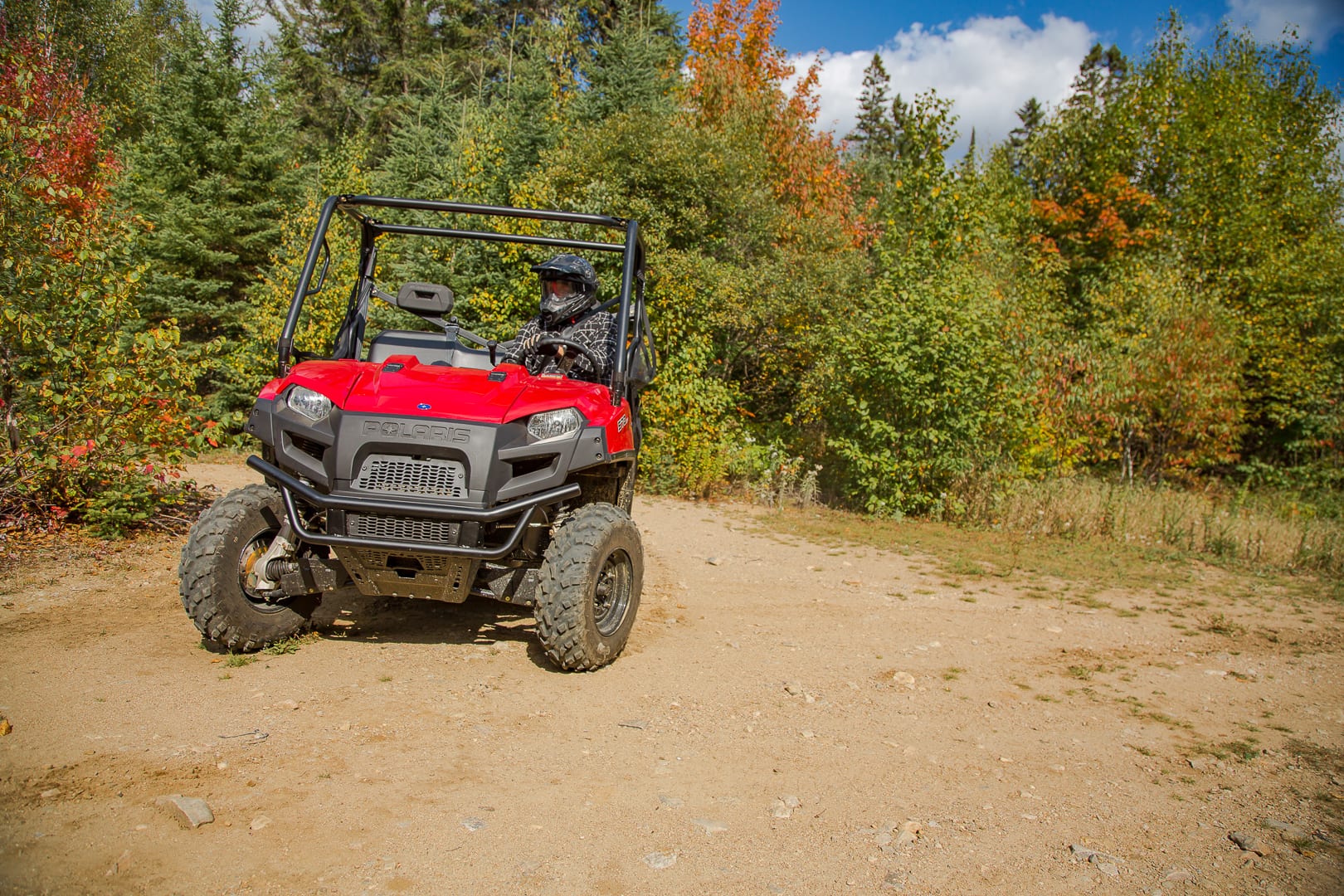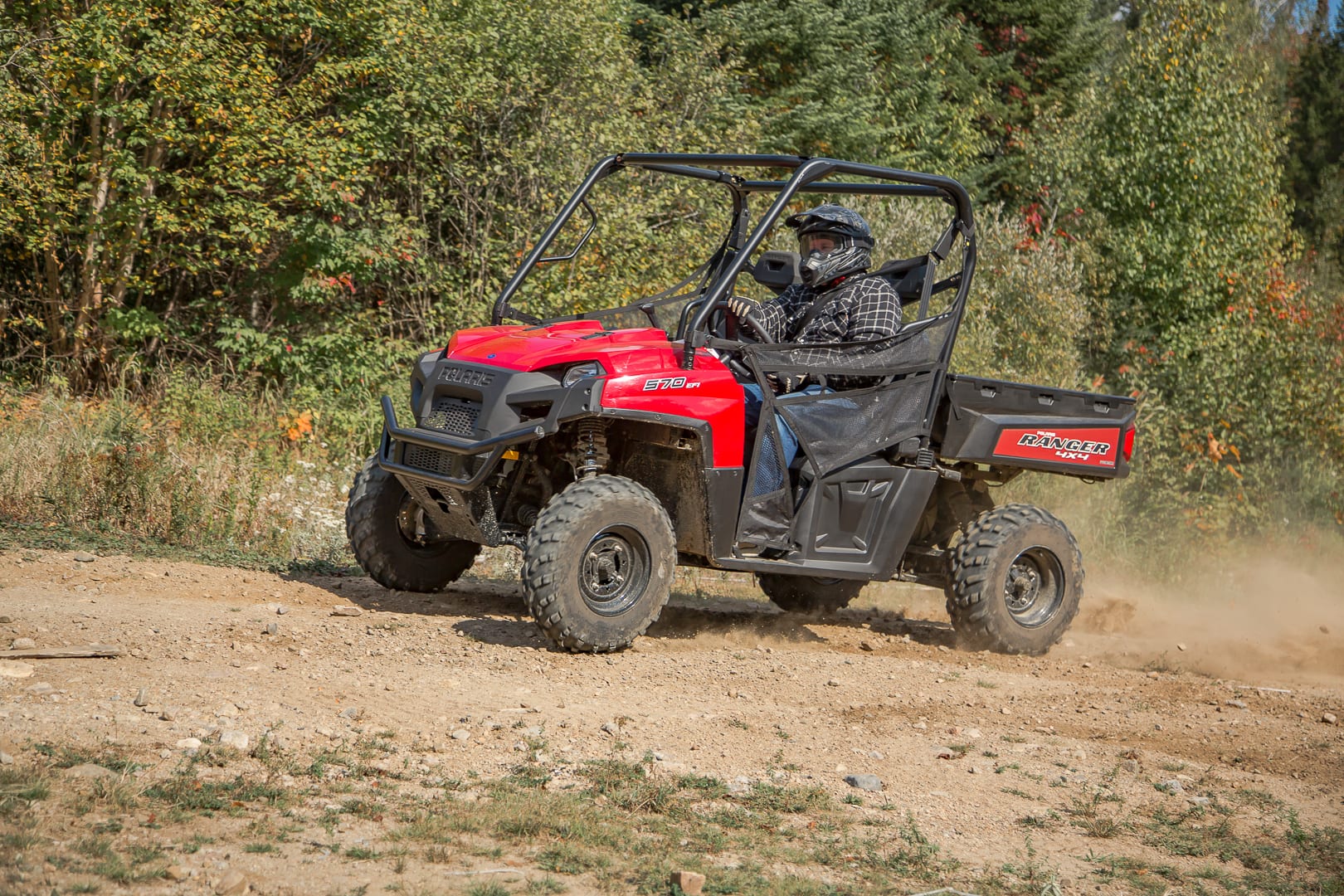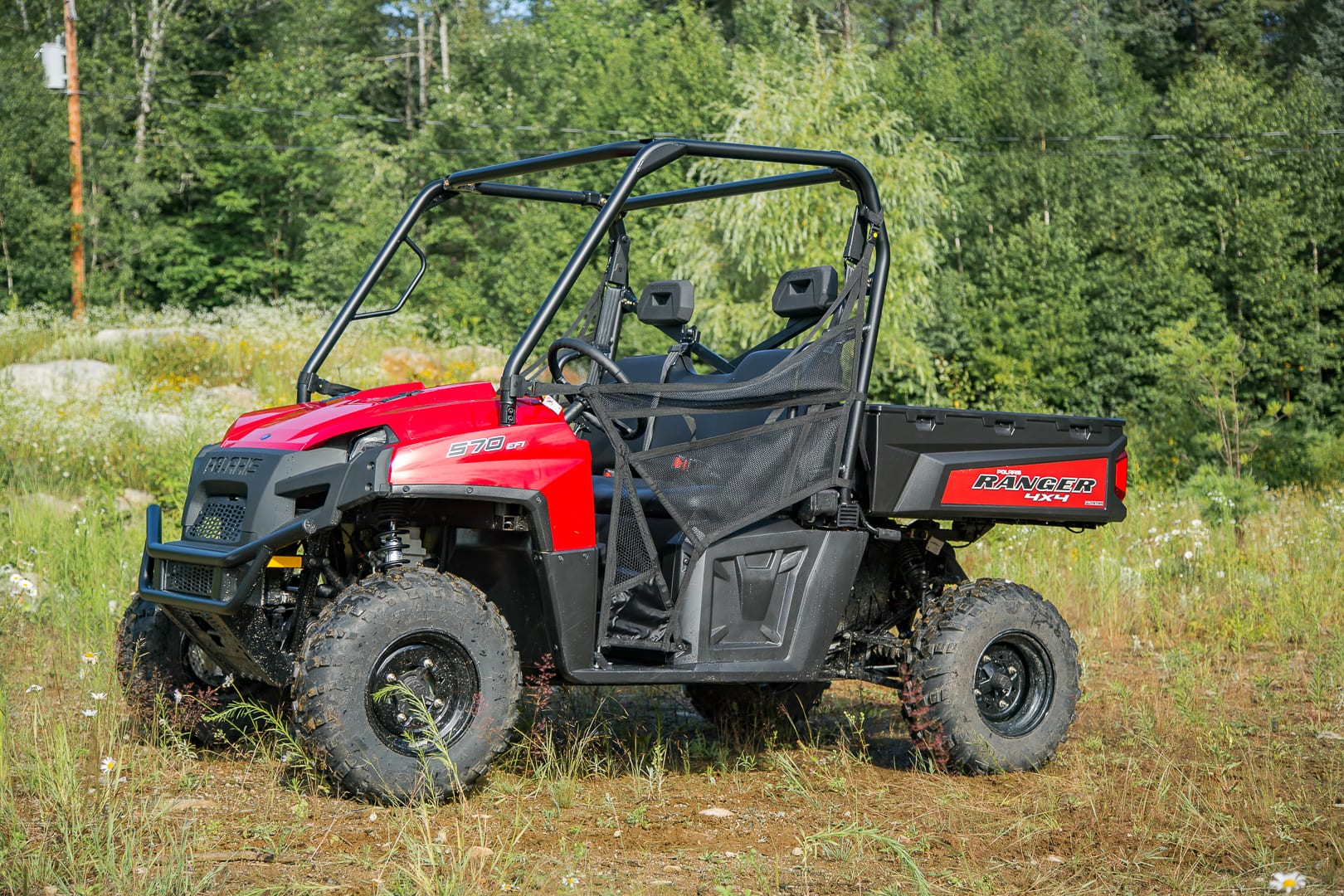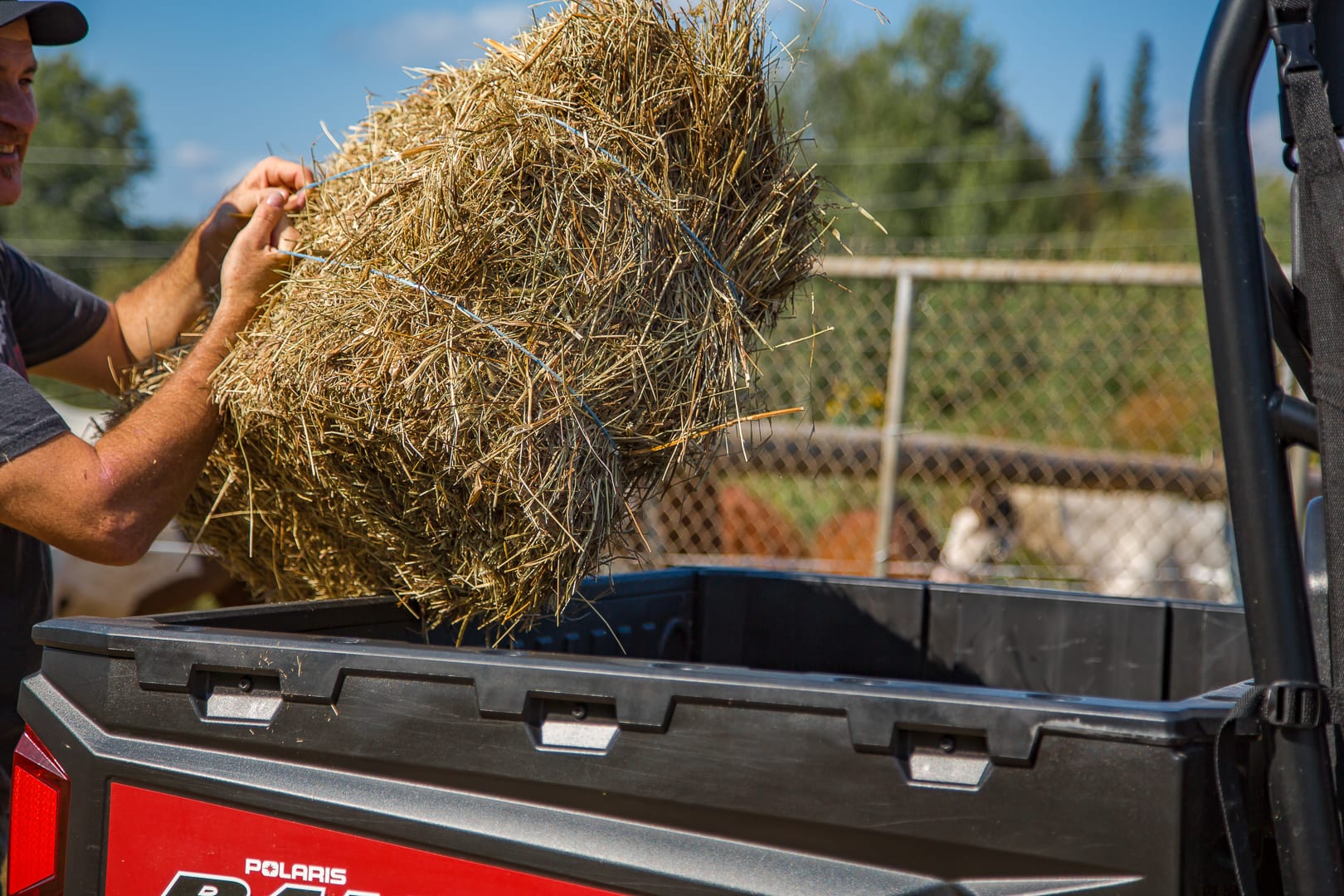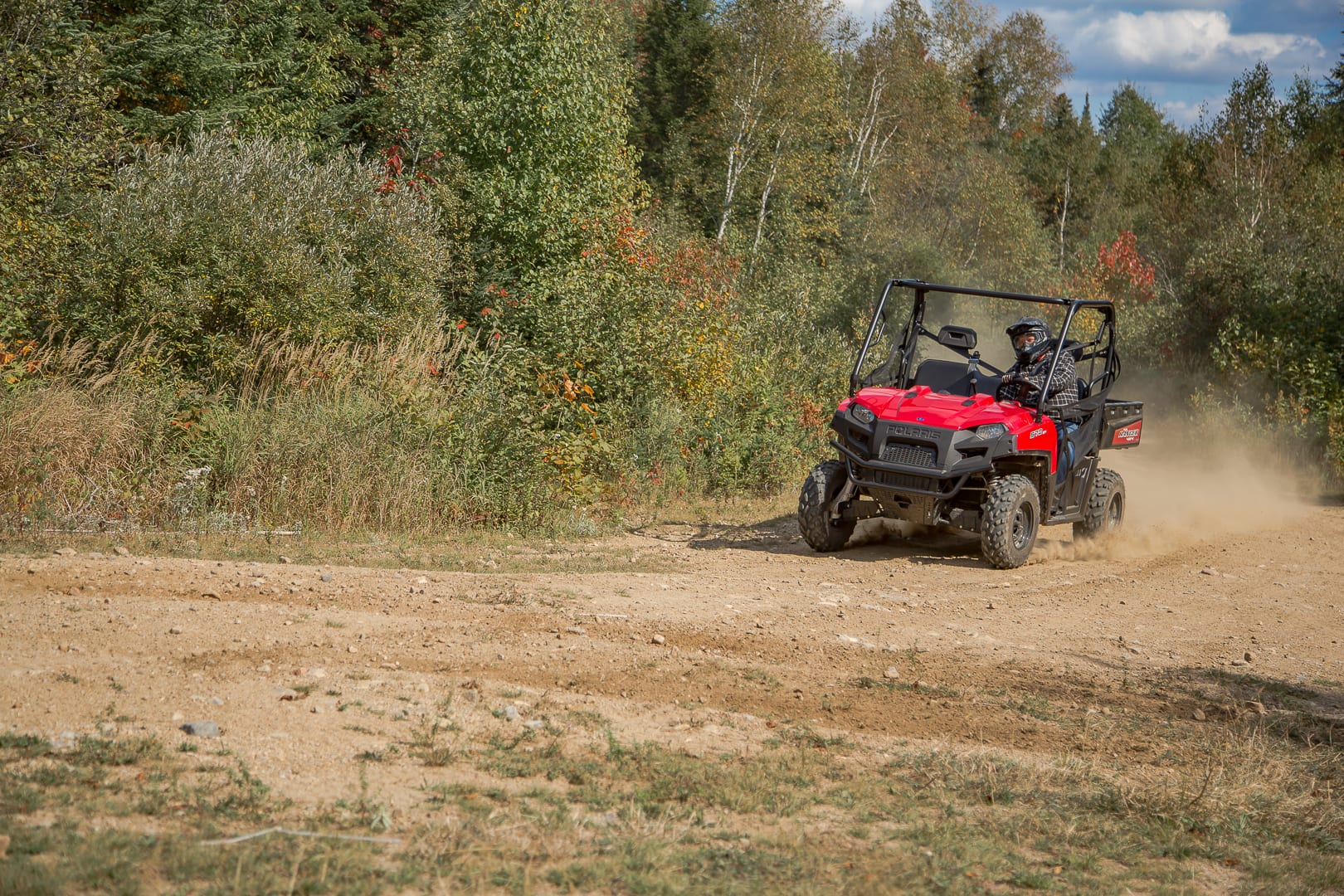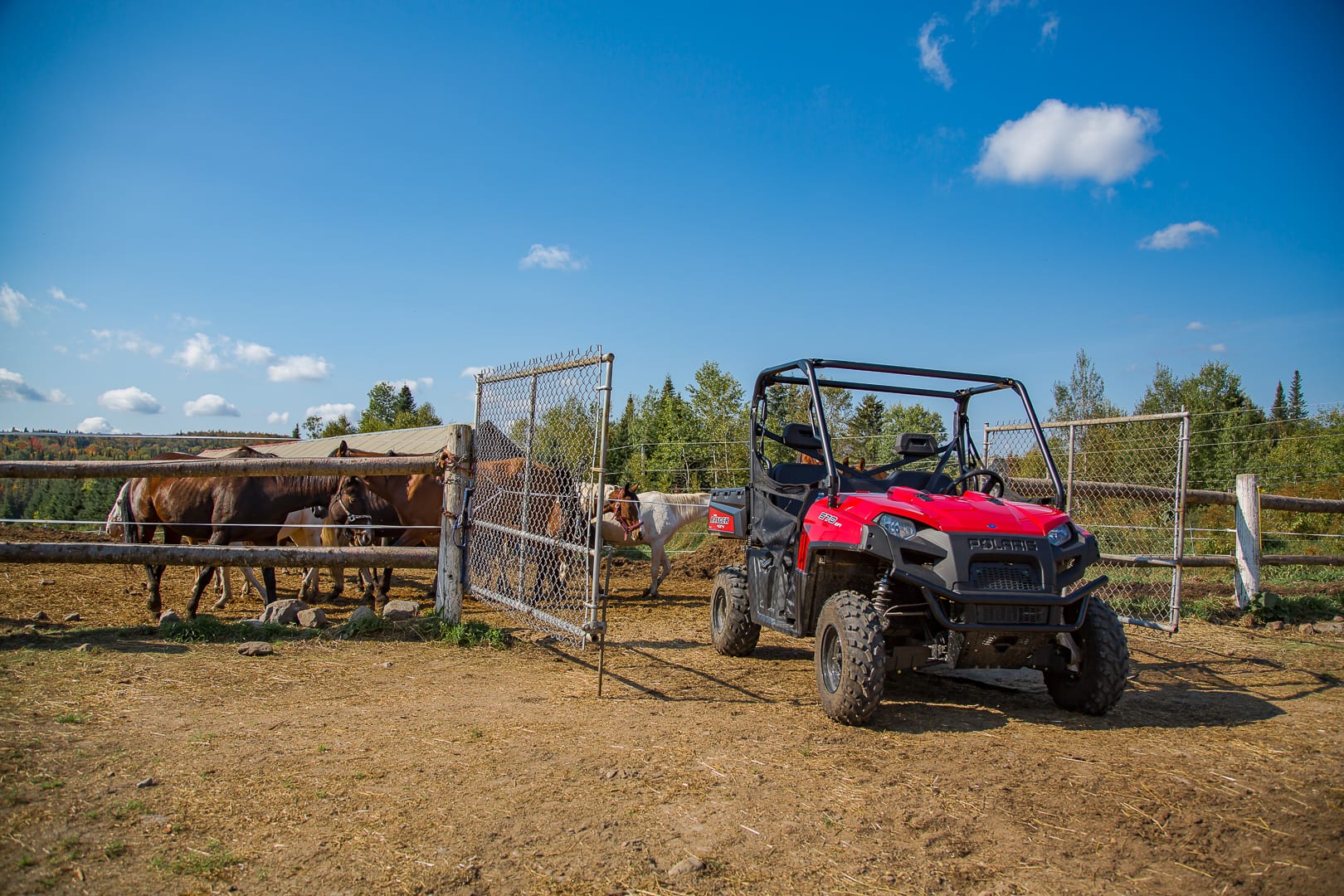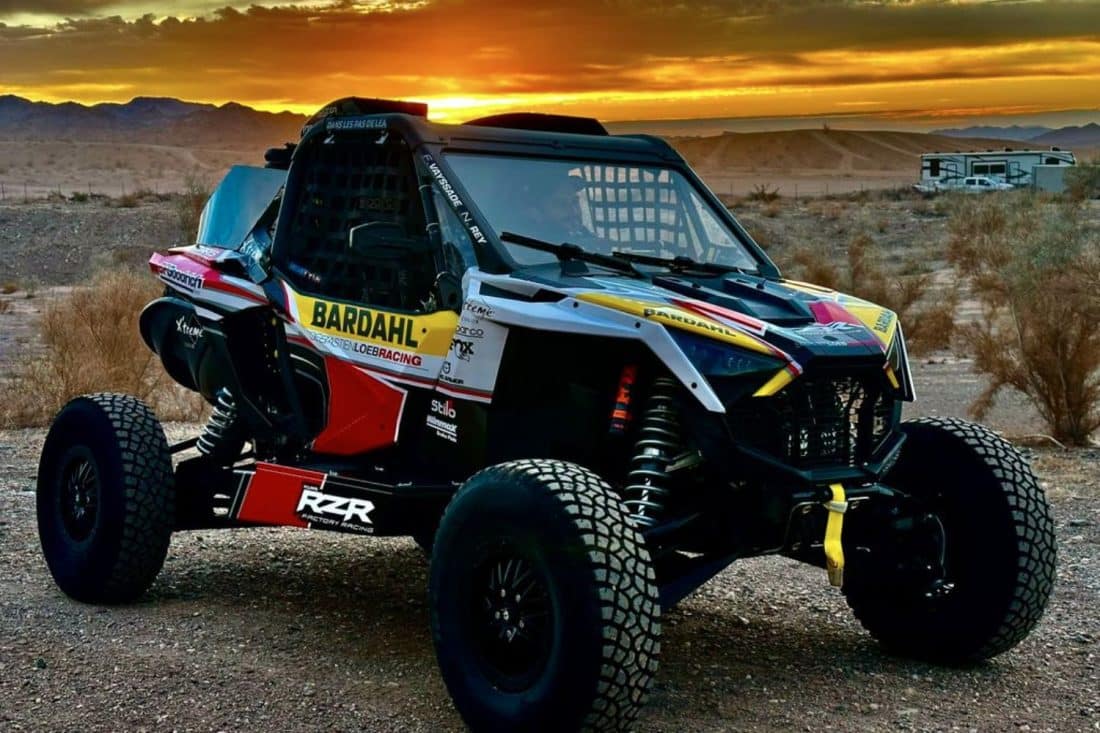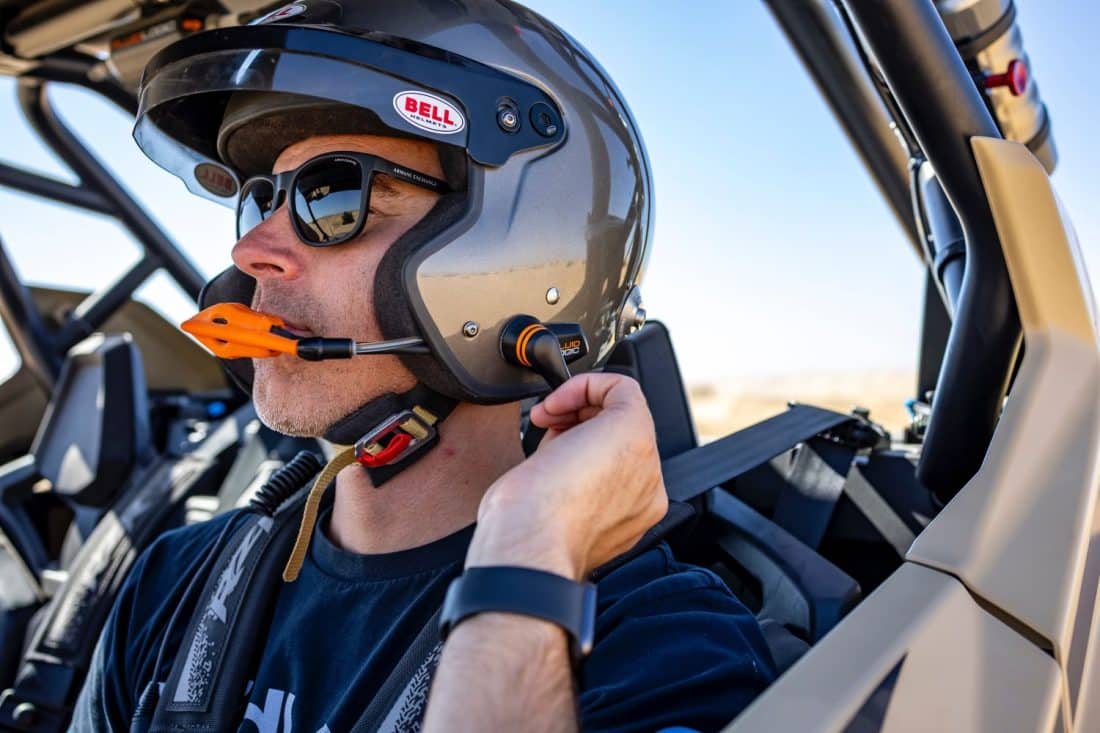The Polaris Ranger has been around for a long time and is a staple utility and recreational machine for many, many people. As the engine sizes steadily rose, so did the price tags, making the machine start to go out of reach for some. To combat this, and swing a few of those buyers back to the Polaris banner, Polaris began developing smaller engine platforms to not only lower the costs of ownership, but also appeal to those folks that don’t want or need the biggest, most power machine they can get. With the development of the ProStar engine platforms, Polaris was able to use their 570 single-cylinder, 567cc engine across several machines in the Sportsman, Ace, Ranger and RZR platforms as well as a few outside projects. The result is a low-cost Ranger model, the Ranger 570 EFI.
Where the 570 got its start is actually with the Ranger 900. When that model was released several years ago, it became the flagship for the Ranger lineup and quickly became the top selling UTV for Polaris. The basic chassis for the full-sized Ranger adapted easily to the 570 engine, opening the door for a lower-cost, full-size utility UTV. To further keep the costs down, Polaris opted to not install power steering on the Ranger 570, although you can get it on the mid-sized 570, but that’s another story.
Let’s talk power
In the Ranger platform, the 570 motor pumps out a steady 44 horsepower. This works pretty good for most tasks, but don’t feel like you’re going to be ripping around. In the full-sized Ranger platform, the 570 feels a little underpowered. Maybe we’re just used to the bigger motors. It’s not a dig against the 570, really. For most looking for a machine in this price range, it’s a really good way to go. Just know going in that there are some limitations.
The 570 does have electronic fuel injection, so starting in cold weather, operating in elevation and fuel economy are all pretty good. The best part of the machine is that the 570 motor is pretty darn solid. You rarely hear about mechanical issues with 570s across any of the platforms Polaris uses the engine in.
Being a single-cylinder engine, and geared low to begin with for the Ranger, the 570 makes most of its power in the lower end. You get some pretty respectable torque for doing tasks around your property.
It’s no 900
Like we said, the 570 shares a lot of DNA with the Ranger XP 900. This includes the chassis and McPherson Strut front, and dual A-arm rear suspension with 9-inches of wheel travel in the front and 10 inches in the rear. It’s not a straight across the board match to the 900, as the engine platform for the bigger Ranger weighs more, making the set up different.
The tires, which are the PXT 489 Polaris tires manufactured by Carlisle, do a great job with durability and traction. The size is 25-8×12 in the front and 25-10×12 in the rear. The smaller size, the 900 gets 26-inch tires, reduces the ground clearance to 10.5 inches from the Ranger 900’s 11. The smaller tire size helps the engine performance, as there is less rolling resistance than a bigger tire would give.
Cargo capacity
Capacity of the Ranger 570 is 600-pounds of cargo in the dumping cargo box and 1,500-pounds of towing capability. It has a 2-inch standard receiver. The capacity is only half the story, though. It’s the capability that really takes the credit here. Being a Ranger, it’s an easy-to-use machine, and we mean real easy. All the controls are right where you’d expect them to be in any machine, making the Ranger easy to get used to and drive. When you’re hauling cargo, it is an easy task.
The elephant in the room
There is something we need to discuss, and it’s not a knock against the machine, really. The unit does not have power steering. This is a cost-saving measure, obviously, so we understand the reason to leave it off. For most machines, this is a difference of a lot of money, and in a machine aimed at a certain price point, it makes sense to leave it off.
Normally, we’re not fans of non-EPS machines. They can be a real handful to drive. There are a few features to the Ranger 570 that help, though. First is the weight. The 570 only weighs in at 1070 pounds (485kg). Reducing the weight of the machine, mostly from the smaller engine platform, helps reduce the overall mass of the machine and makes turning it a little easier when under power and moving. Of course, when turning from a stopped position, it gets a lot tougher. Another thing that helps is the Polaris On Demand True All-Wheel Drive. If the machine was locked into a full-time four-wheel drive, you’d have a very hard time driving it. Being a limited slip system that only adds drive as wheels slip, it lets you be able to steer while in all-wheel drive mode. Another nice feature is the Versa-Trac Turf mode, which unlocks the rear differential to allow a single wheel to receive power. Again, if you’re trying to turn, this really lessens the negative effects of not having power steering.
Taming the trail
Polaris Rangers are considered a utility/recreation machine by most people. They are capable workhorses and usually fun trail machines, especially for those that like quiet machines. We’re not going to lie. You don’t go taming the trails in a Ranger 570, the trail tames you. Without power steering, and having a smaller engine, you are just not going to enjoy the experience on the trail as much as you would an EPS-equipped machine. Wooded trails are really a handful in the Ranger 570 because the stumps, rocks and uneven terrain make the machine not much fun. You will run into a lot of bump-steer issues and the machine’s frame size matched with the amount of horsepower the 570 engine puts out can make it feel underpowered for what you’re doing.
Let it shine
Don’t feel like we hate the machine, though. We don’t. In fact, we rather like it when looking at it for what it is. As a low-cost workhorse machine best suited for utility functions, it is hard to beat it in the category. The frame and body design, even though a few years old, still looks great and functions extremely well. The 570 engine that might seem underpowered on the trail, works exceptionally well for light to mid utility work. The cargo capacity is still at or above what many other machines with similar price points can offer.
One of the best features of this machine, which we cannot stress strongly enough is that it is a machine that should have people thinking about it versus other machines at a similar price. By this, we mean that if you walk into a farm supply-type store and see what we often refer to as off-brand UTVs, and by this we mean non-major brands sold by dealerships, you’ll notice something. While that off-brand machine may have some snazzy features and a bigger motor for a price similar to the simple Ranger 570, what it lacks is the quality and development of the Polaris brand, and the dealer network to service and repair the Ranger in the event that ever becomes an issue. “But this one has a winch and a bigger motor and is $500 less than that Polaris with no power steering…” Better buy two, then. You’ll need one for a spare.
The bottom line
The Polaris Ranger 570 is what it is – a lower cost, simple work horse aimed to provide people who need a utility UTV with a low cost of ownership, rugged features and enough capability to get the job done. It’s not a trail machine, but it was never intended to be. If you’re in the market for a machine with a simple, reliable motor that produces a good amount of usable horsepower, can outhaul and out tow many other machines in its class and last on the job for years of use, the Polaris Ranger 570 is a bargain that you definitely owe it to yourself to take a look at. Head over to your local Polaris dealership to see it for yourself.



